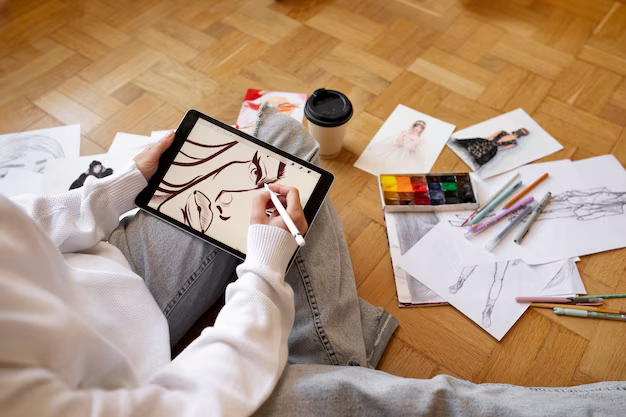Design is not just about making things look good – it is about creating meaningful, functional, and visually appealing solutions that solve problems and enhance user experience. Whether it’s a website, product, or interior space, the balance between functionality and aesthetics is crucial for successful design. In the realm of design, the art lies in blending these two elements seamlessly to create something that not only serves a purpose but also delights the senses. The art of design, therefore, is all about understanding how these two elements—form and function—work together to elevate the user experience.
The Balance Between Functionality and Aesthetics
Design can be broken down into two key aspects: functionality and aesthetics. Functionality refers to the practical aspect of design—how well a product or service meets its intended purpose. Aesthetics, on the other hand, is concerned with the visual appeal—how it looks, feels, and engages the viewer. A successful design must strike a harmonious balance between these two components.
Functionality: The Foundation of Good Design
The core of any design is its functionality. Functionality ensures that the design performs the task it is meant to, and that it does so efficiently, intuitively, and comfortably. For instance, a chair must be comfortable, durable, and provide proper support. A website must be user-friendly, easy to navigate, and fast to load. When the design lacks functionality, it becomes frustrating or impractical, no matter how visually stunning it may be.
Functionality goes beyond simply fulfilling a basic need. It’s about anticipating the user’s needs and optimizing the design to make the user experience as seamless and pleasant as possible. For example, an app with a cluttered interface may be visually striking, but if it hinders ease of use, it fails in its primary function.
Aesthetics: Engaging the Senses
Aesthetics, the visual and sensory aspect of design, is what captures attention and creates an emotional connection with the user. The role of aesthetics is not just to make something look appealing but also to communicate a brand’s message, evoke emotion, or influence behavior. Colors, typography, shapes, and textures all play a significant role in how a design feels.
Good design elevates functionality by providing a visually pleasing experience. Aesthetics guide the user’s journey, drawing them in and enhancing the overall perception of the product or service. It can convey professionalism, creativity, elegance, or warmth, depending on the desired brand identity.
The Integration of Functionality and Aesthetics
In the best designs, functionality and aesthetics are not separate or competing elements; they are complementary. For instance, a well-designed website integrates clean, easy-to-navigate interfaces with beautiful visuals that support the content rather than overshadow it. A product like a smartphone has a sleek, attractive design that serves as a statement of its brand while offering practical features such as ergonomic buttons, an easy-to-read screen, and efficient battery life.
Achieving a successful balance requires deep understanding, expertise, and a focus on the target audience. Designers need to consider the purpose, target market, and context of the design. They must also collaborate across disciplines—from graphic design to user experience (UX) and industrial design—to ensure that both form and function work in harmony.
For example, Apple’s products are known for their minimalist design approach. The company’s focus on simplicity, both in the user interface and the hardware, is a result of the seamless integration of functionality and aesthetics. The user experience is intuitive and easy to navigate, while the sleek, attractive design appeals to consumers’ desire for both style and usability.
The Challenges in Blending Functionality with Aesthetics
Designers often face challenges in blending functionality and aesthetics. One common challenge is ensuring that a design doesn’t sacrifice usability in favor of beauty. A design may look stunning but fail in terms of functionality if it confuses the user or makes tasks difficult. For instance, a beautiful website might have an artistic layout that looks modern but makes it hard for users to find essential information.
Another challenge is overcoming the conflict between trends and timelessness. Many designers are drawn to trendy aesthetics, but trends can quickly become outdated. It’s important to balance contemporary styles with enduring design principles to ensure long-term relevance.
Moreover, design is inherently subjective. What one person finds visually pleasing may not resonate with another. The designer must cater to the tastes and preferences of the target audience, ensuring that aesthetics enhance the user experience without overwhelming the design’s core functionality.
FAQs
1. What is the difference between functionality and aesthetics in design?
Functionality is about how well a design performs its intended task, while aesthetics is about the visual appeal and emotional connection a design creates.
2. Why is balancing functionality and aesthetics important?
A design that lacks either functionality or aesthetics can lead to a poor user experience, which can ultimately result in failure. A harmonious balance ensures that a design is both useful and engaging.
3. Can a design be functional but not aesthetically pleasing?
Yes, but such designs may not capture users’ attention or make them feel emotionally connected to the product. Even if it’s practical, a lack of aesthetics may make the design feel unwelcoming or sterile.
4. How can a designer ensure a balance between aesthetics and functionality?
Designers can ensure balance by understanding the user’s needs, the purpose of the design, and the context in which it will be used. Combining user experience (UX) research, usability principles, and visual design elements is key.
5. What is an example of a well-balanced design?
Apple’s products like the iPhone are a prime example of good design, combining sleek, visually appealing aesthetics with highly functional features that provide a seamless user experience.
6. Can trends influence the balance of functionality and aesthetics?
Yes, trends can influence aesthetics, but they can also pose a challenge by distracting from functionality. It’s essential to balance trendy elements with timeless design principles that enhance usability.
7. How do designers stay updated on trends without sacrificing functionality?
Designers can keep up with trends by researching industry changes, experimenting with new ideas, and maintaining a focus on user-centered design to ensure the final product serves its function while still looking current.
Conclusion
The art of design is about more than simply making things look good. It’s about blending form and function in a way that serves the user while evoking an emotional connection. Achieving the right balance requires a deep understanding of both the user’s needs and the visual language that will communicate the design’s purpose. Successful designs are not just about aesthetics or functionality in isolation, but rather how they work together to create an unforgettable user experience.

